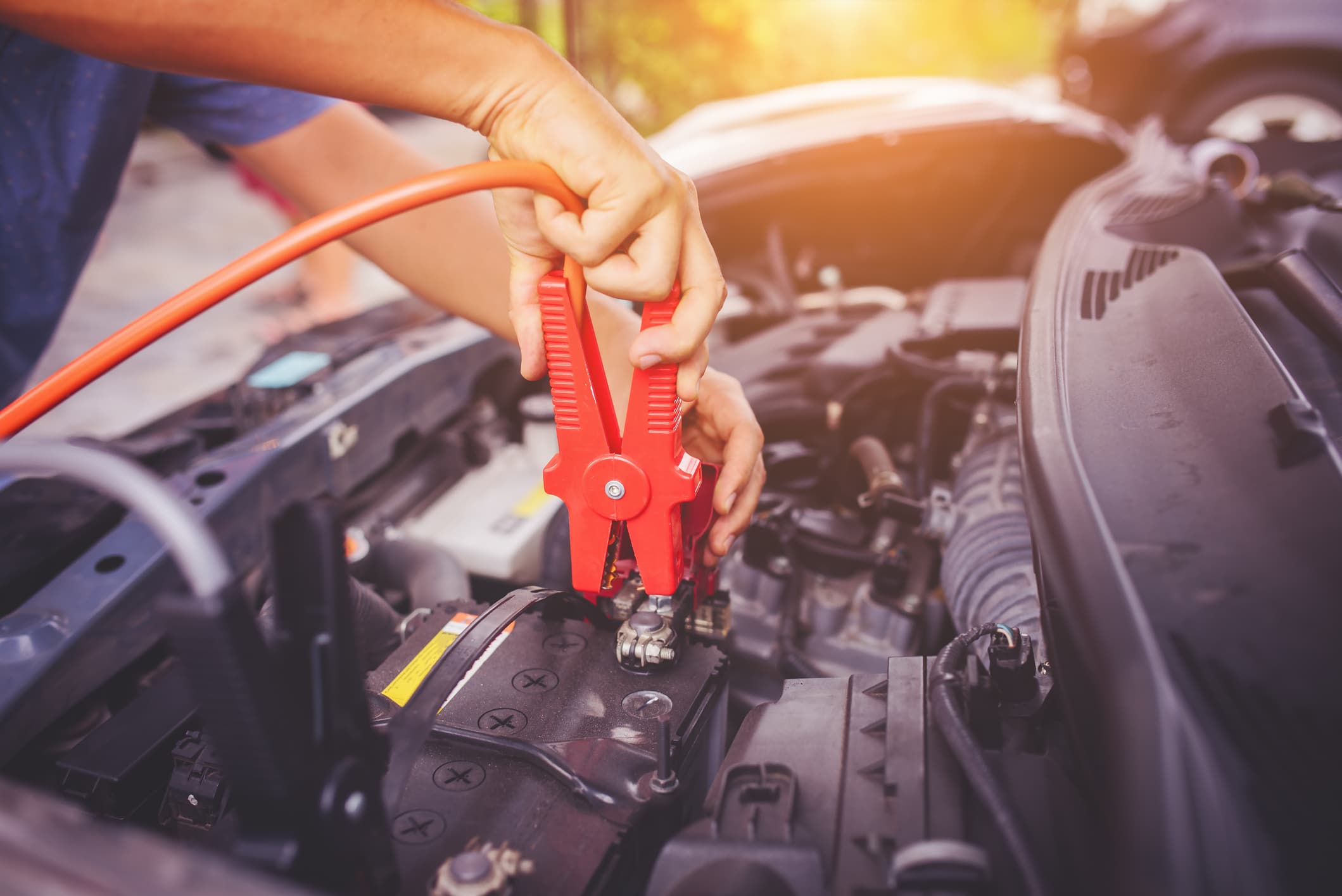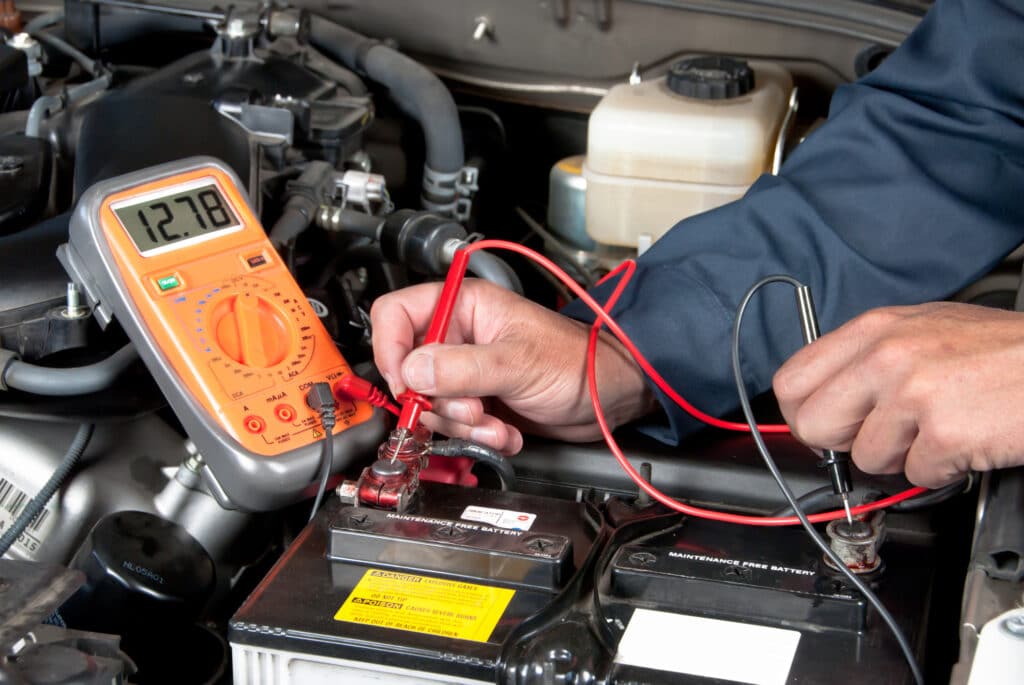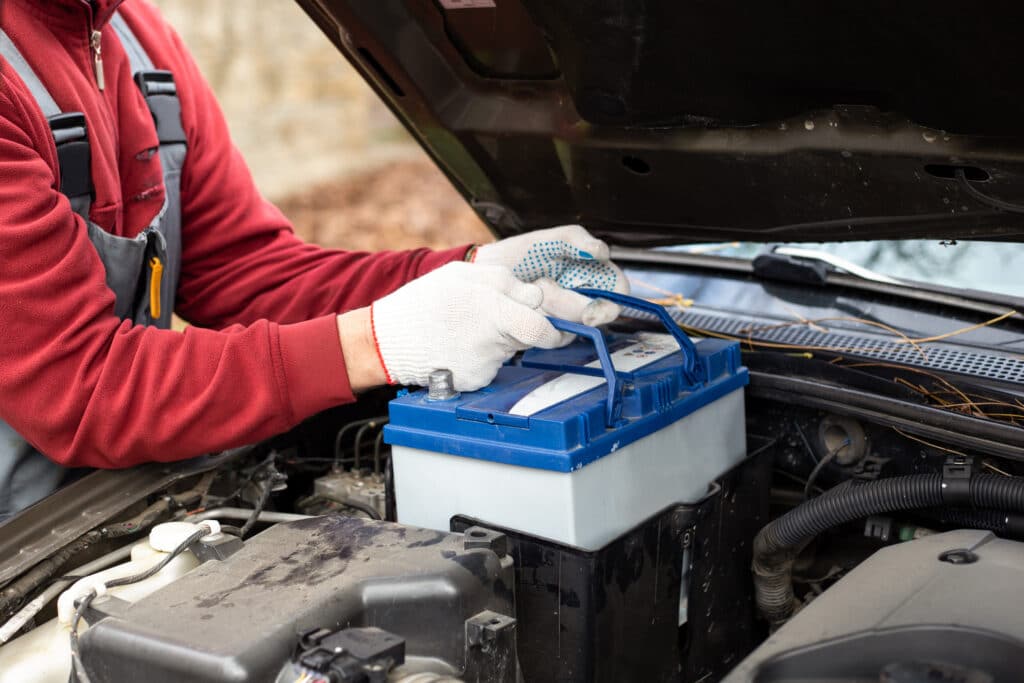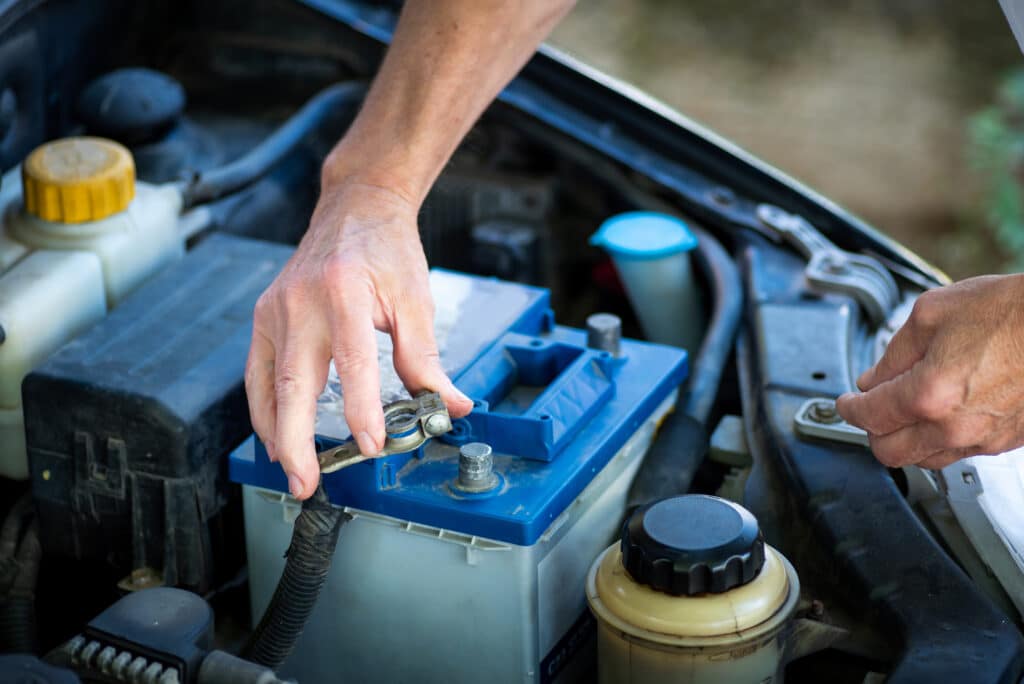If you’ve tried to turn your engine on and nothing happens, there’s a high chance the battery may be dead. Most starting problems are caused by a flat or rundown battery, but you’ll be pleased to know that you can actually change your car battery at home, potentially saving you the cost of taking it to a mechanic. A car battery can last for many years if properly maintained, as well as how it was installed – so it pays to make sure that you can replace your car battery carefully and accurately. So, let’s take a look at how to spot if you car battery needs changing, how to test it and of course, how to change it if you need to.
How to Test a Car Battery
If you want to test the charge of your car’s battery, a voltmeter is the way to go. While we wouldn’t recommend getting the cheapest one possible, you’d be hard-pressed to notice the difference between a £10 and a £20 voltmeter.
To test the battery, make sure the ignition is switched off with the key removed. Then, delicately remove the covers on the battery terminals and connect the voltmeter to the battery.
Connect the positive (+) side of the voltmeter to the positive (red) terminal on the battery first and then connect the negative (-) side of the voltmeter to the negative (black) terminal on the battery.
The next step is to look at the reading on the meter. A battery in proper health should read anywhere between 12.4V and 12.7V. A slightly lower voltage could indicate that the battery isn’t fully charged.
How to Spot if Your Car Battery Needs Changing
When it’s time for your battery to be replaced, your car will put out some tell-tale signs that the battery isn’t working as it should.
Most manufacturers recommend changing your car’s battery every 3-5 years to avoid unexpected breakdowns, although your mileage may vary.
Common signs that your battery needs replacing are:
- The car is silent when trying to start the engine.
- The car takes a long time to start.
- The headlights are dim.
- Visible damage to the battery (corrosion, bulging).
A dead battery isn’t necessarily indicative of a faulty battery, it could be a sign of a leak somewhere else. There could be electronics in the car that are draining the car’s battery, which will require separate troubleshooting. In this instance, a battery replacement isn’t necessary and won’t fix the underlying issue.
You can find out more about why your car battery might be draining here.
How to Change Your Car Battery at Home
Once you’ve determined that your battery is faulty and needs replacing, you can start the process of disposing of your old one and putting in a new one.
Like any job, before you start, it is imperative that you have the correct tools for the job. To change a car battery, we’d advise the following tools:
- Safety glasses and gloves
- Variety of spanners/wrenches
- Pliers
- Hammer (used gently)
- Battery terminal cleaner
Once you’ve got your safety gear on, follow these steps to first remove the old car battery:
- Find the battery. Car batteries are found in the engine bay. If you’re not sure where the battery is located, your vehicle’s owner’s manual will be able to point you in the right direction.
- Disconnect the negative terminal. Start by disconnecting the negative terminal, usually marked with a (-) or (Neg). You can do this by loosening the nut/bolt that keeps the negative cable in place. You should use your spanners/wrenches/pliers for this job. Once the cable is disconnected, ensure that it does not touch anything metal.
- Disconnect the positive terminal. Repeat the same steps as above with the positive terminal that is marked with a (+) or (Pos).
- Remove the battery hold-down bracket. On certain models of car there are hold-down brackets; remove these if they are holding the battery in place.
- Take out the battery. Carefully lift the battery out of the battery tray.
- Clean the battery tray. Before you install the new battery, clean the battery tray and remove any corrosion or residue. Rinse with clean water and dry thoroughly.
- Reconnect the new battery: This is done by simply reversing the above steps, making sure to connect the positive terminal first, and then the negative. Again, it’s important to note that the cable shouldn’t come into contact with any metal parts.
How to Properly Recycle Your Old Car Battery
After you’ve replaced the old battery, you must recycle it properly so that people and the environment are protected from the dangers of a previous battery.
You should aim to recycle the old battery as soon as possible, by either taking it to your local recycling centre which will have a specific section for car batteries or by taking it to a garage that uses an approved recycler to dispose of the battery.
What is a Car Battery and How Do They Work?
Looking for a little more information on how a car battery actually works? The battery in a car is usually a lead-acid battery located in the engine bay (usually at the front of the vehicle). Manufacturers still use lead-acid batteries over the more modern lithium-ion due to safety concerns. A lithium-ion battery is far more likely to explode than a lead-acid battery, which is entirely undesirable in close proximity to flammable liquids.
The battery is primarily used to provide high-voltage electricity to power the starter motor, which then starts the car as well as providing supplementary power when the alternator cannot provide all of the electricity that is required.
The battery is charged by the alternator converting mechanical energy into electrical energy while the engine is running, this is why a battery can go flat if headlights or other electricals are left on for too long without the engine running.
After reading our comprehensive guide, you are now armed with the knowledge of what a battery does in a car, signs that it might be faulty and how you can replace it if it is faulty. Remember that batteries can be dangerous to handle and that safety must always come first. For more information and guidance, check out our help and advice hub.






